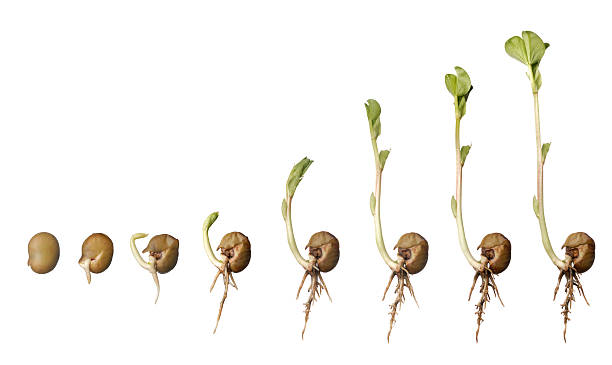Germination is the exciting process where a tiny seed transforms into a young plant, ready to grow into something larger and more fruitful. Whether you’re an experienced gardener or new to the world of hydroponics, understanding the ins and outs of seed germination is vital to achieving strong, healthy plants. With the right conditions, your seeds will sprout and thrive, setting the stage for a thriving hydroponic garden.
What is Seed Germination?
refers to the process in which a seed grows into a new plant. When a seed comes into contact with water and warmth, it “wakes up” from its dormant state and begins to grow. The germination process involves several key stages. First, the seed absorbs water, causing it to swell. This process activates enzymes within the seed, triggering the growth of the embryo plant. Within a few days, the root (called the radicle) begins to push downwards, while the shoot starts to grow upwards, seeking light.
The process may seem simple, but it is delicate and requires the right conditions to succeed. Ensuring optimal moisture levels, light, temperature, and growing medium are key to fostering healthy seed germination.
Understanding the Right Conditions for Germination
When it comes to successful germination, moisture is the most important factor. Seeds will not germinate if they are too dry, but they also cannot thrive if they are submerged in water. A perfect balance is essential. Hydroponic growers have a unique advantage, as they can control and maintain the ideal moisture levels much more easily than traditional gardening methods.
In hydroponic tower systems, aeroponics is used, which means that plants are grown with their roots suspended in air and misted with water. This system provides seeds with just the right amount of moisture, keeping them hydrated while ensuring they aren’t waterlogged. By using aeroponics, your seeds will experience optimal moisture levels, resulting in quicker, healthier germination.
Choosing the Right Medium for Seed Germination
Although seeds are very picky about moisture, they are more flexible when it comes to the growing medium. While soil is a traditional option, hydroponic systems like yours use alternative mediums such as rockwool. Rockwool is an excellent growing medium because it retains moisture and provides stability for the seeds as they begin to sprout. In fact, rockwool is often considered one of the best mediums for hydroponic seed germination, as it holds water for long periods without becoming waterlogged.
Another medium that is becoming increasingly popular for seed germination is a wet paper towel. This is a simple and effective way to begin germination for smaller seeds. However, for hydroponic systems, using a more sustainable medium like rockwool is recommended to ensure long-term plant growth.
Temperature and Light: Setting the Right Environment
Temperature plays an important role in seed germination. Most seeds require warmth to activate the enzymes necessary for sprouting. A temperature range of 65°F to 75°F (18°C to 24°C) is ideal for most seeds. Ensure that your hydroponic tower system is set in an environment with a stable temperature that will promote germination without exposing the seeds to extreme conditions.
While light is not necessary for the initial stage of seed germination, it is essential for the next stage of growth. Once your seeds have sprouted, they will need access to light for photosynthesis to begin. Hydroponic systems often use grow lights that provide the necessary light spectrum to encourage healthy growth.
Tips for Successful Seed Germination in Hydroponic Systems
- Use the Right Medium: Whether it’s rockwool or another suitable hydroponic growing medium, make sure it holds moisture well and provides stability for the seeds to germinate.
- Maintain Moisture: The growing medium should remain moist throughout the germination process, but never waterlogged. Aeroponic systems excel at providing the perfect moisture levels.
- Keep Seeds Warm: Ensure your seeds are in a warm environment within the recommended temperature range to activate the germination process.
- Provide Light Post-Germination: Once seeds have sprouted, introduce them to grow lights or natural light to support their growth into strong, healthy plants.
- Monitor Seed Progress: Regularly check on your seeds to ensure they are not drying out or being overwatered. Adjust the moisture levels as needed to keep them in their optimal growing conditions.
The Benefits of Aeroponics for Seed Germination
One of the biggest advantages of using aeroponic systems for seed germination is the level of control it offers. In traditional gardening, factors like soil quality, weather conditions, and inconsistent watering can lead to poor germination rates. With aeroponics, you can ensure that your seeds receive consistent moisture and oxygen, resulting in a higher success rate for germination. Moreover, aeroponic systems can also encourage faster root growth, giving your plants a strong foundation to support their growth.
Conclusion
Seed germination is an exciting and essential part of the hydroponic growing process. By using aeroponic systems in your hydroponic tower, you can provide your seeds with the perfect conditions to sprout and grow into healthy plants. From maintaining optimal moisture levels to choosing the right growing medium, the key to successful seed germination lies in creating an ideal environment. So, with a little care and attention, your hydroponic garden will thrive, giving you a bountiful harvest of fresh produce.

